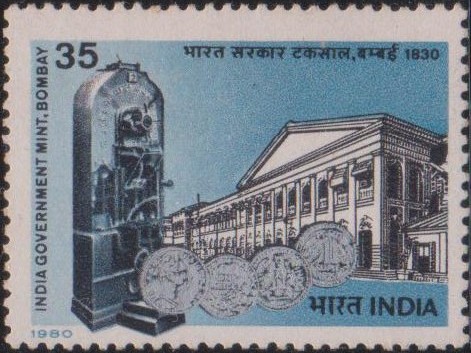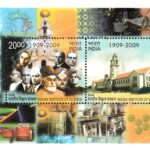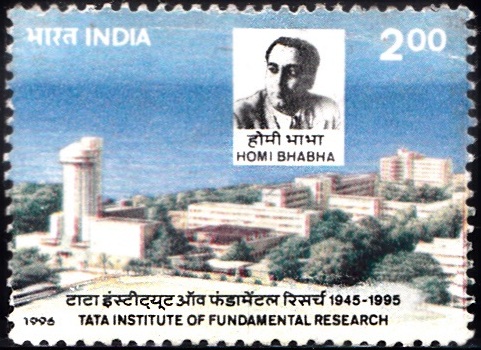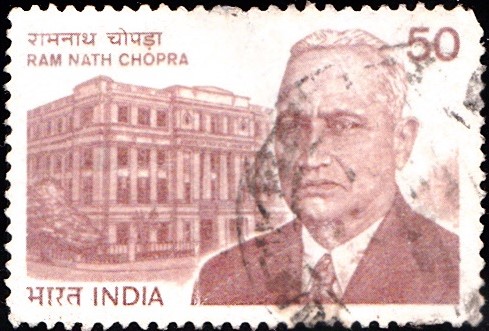
India Government Mint, Bombay
A commemorative postage stamp on the 150th Anniversary of the India Government Mint, Mumbai, one of the four mints in India :
 Issued by India
Issued by India
Issued on Dec 27, 1980
Issued for : The Indian Posts & Telegraphs Department is happy to commemorate 150 years of India Government Mint, Bombay by issuing a postage stamp.
Description of Designs : The stamp depicts a view of the building of Government Mint, Bombay alongwith a die press machine. The first day cover is a line sketch of the building.
Type : Stamp, Mint condition
Colour : Multicolour
Denomination : 35 Paise
Overall size : 3.91 x 2.90 cms.
Printing size : 3.55 x 2.54 cms.
Perforation : 13 x 13
Watermark : Printed on unwatermarked P. G. Matt stamp paper
Number printed : 20,00,000
Number per issue sheet : 35
Printing Process : Photogravure
Designed and Printed at : India Security Press
About :
- Gold and silver have been the standards of value and exchange throughout the world for many centuries. In India, Emperor Sher Shah made the Rupee the standard currency within his domain and followed the ratio of exchange of one tola of gold to 15 tolas of silver. His gold mohur and silver rupiya were each of 180 grains in weight. Mints using hand-cut dies became extensive during the Mughal period. The important mints then were at Agra, Lahore, Jaunpur (U.P.), Delhi, Ahmedabad, Murshidabad (W.B.), Patna, Dacca, Varanasi, Sagar and Surat.
- According to some reports, the East India Company set up a mint at Bombay in 1671, after the island was transferred from the Crown to the Company in 1668, and the first coin was struck in this mint in 1672. However, the East India Company is reported to have obtained limited rights of coinage at their own mints from the Mughal emperors in 1717. They set up mints at Bombay (1717), Madras (1742) and Calcutta (1758). Each Presidency had its own gold mohur and silver rupee.
- Besides the British, the other European powers in India had also set up their own mints. The Portuguese had a mint in Goa, the Dutch in Pulicat, Nagapattinam, Masulipatnam, Pondicherry and Cochin. The Danes had their mint at Thanjavur and the French at Pondicherry, Arcot, Murshidabad and Surat.
- An Act of the British Parliament passed in 1836 during the reign of King William IV made the coinage uniform and mono-metallic. The silver standard came into being and silver rupees of various weights and fineness as well as gold mohurs became non-legal tender.
- In 1824 land for the present Mint at Bombay was acquired near the Town Hall and the Bombay Castle. The building was designed and constructed by Major John Hawkins of the Bombay Engineers. The Mint started functioning in the new premises in 1830. Initially it was under the supervision of Bombay Government. The Central Government took over its direct management in 1876.
- When industrial application of steam power was nascent, the Mint was equipped with steam engines of varying horse-powers. It now has modern electric furnaces and other sophisticated equipment. Its present daily out-turn is about 2.5 million coins, medals, seals etc.
- (The above text is based on material published elsewhere and/or supplied by the sponsors).








[…] of India, except for the one rupee note. Many regular and commemorative coins have been issued by India Government mint, which are prized collectibles […]